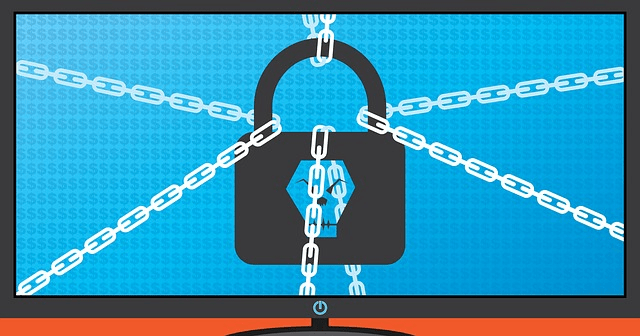Many businesses all over the world are forced to operate remotely as a result of the pandemic. While this allows workers to remain safe and work conveniently at the comfort of their own homes, remote workers’ productivity can be greatly hindered. F1 IT Support Canberra experts advises that these setbacks are often caused by unexpected and unforeseen IT problems. Some of these problems can’t be controlled by either the employees or the organization itself, which makes working remotely very frustrating and inefficient.
It can be difficult for organizations to provide the needed technical support for all the workers, and at the same time, employees should not take the responsibility for these technical issues. This is why we are here to tell you 6 effective ways to help you resolve common IT problems that are experienced by remote workers.
The Challenge
Table of Contents
Numerous businesses, especially smaller ones, find it very hard to provide their workers with the needed technical support. The luckiest organizations are the ones with previous “work from home” experience. Whether they fully function remotely, they have employees settling internationally, or they allow their workers the luxury of working remotely, these companies are slightly more prepared to face the challenges that were brought on by the coronavirus pandemic.
However, other organizations, specifically those that lack resources, were unprepared and thrown off by this unfortunate circumstance. Brick-and-mortar companies, and those organizations that depend on having their employees physically present at the offices usually use traditional IT and security systems. These systems are designed in a way where employees at the organization are connected to a single secure network. Unfortunately, not all organizations have the infrastructure, resources, and experience that would allow them to make a complete shift into operating remotely.
Besides, even if the organizations were to provide the employees with sufficient technical support, most workers wouldn’t be trained to adapt to such situations. Some employees lack the necessary knowledge regarding cybersecurity and other technical threats. The following are some of the common issues and steps that you can take to create a more efficient remote working environment for your workers.
Setting Up a Home Network
The most common issue that remote workers have to face are home network malfunctions. Everyone is susceptible to facing internet and network issues, which can be a real problem considering that a strong network is a necessity when it comes to working remotely. Organizations have no control over the kind of network equipment that their employees use at home, and typical home networks aren’t made to handle a load of multiple users using them simultaneously.
For example, if your employee has a large family and everyone is working at home, then they will be using the same network to get their work done. In addition, organizations can’t guarantee the security of their workers’ networks. When IoT devices or mobiles are connected to poorly secured sources, the network will be exposed to endless threats.
There are multiple ways in which an organization can resolve such network problems. Companies can provide hotspot devices and services for their workers or even pay for their employees’ data charges. To ensure and prevent cybersecurity attacks, the organization can explore VPN solutions to guarantee security, flexibility, and accessibility. VPN allows workers to use the same apps using the same file access, which doesn’t require additional training. It also works by authenticating devices or users and uses a type of encryption to secure the data.
Providing Functional Solutions
Complex communication systems can be very hard for employees to navigate through. In an attempt to provide functional and safe solutions, many companies tried to make use of all that technology has to offer. When an organization uses several communication platforms, some employees lack the technical knowledge that will allow them to steer through.
It also makes it all the more stressful and ends up being counter-productive. To prevent these problems, there are many workspace platforms that are designed to offer a variety of features in one place. These platforms support direct group and private chat rooms, files, and documents sharing, voice and video calls, as well as screen-sharing with one another.
Hiring IT Support
A common problem among remote workers is the lack of IT support. In several UK workplaces, employees can refer to IT specialists if anything goes wrong, which isn’t the case when they are working from home. The London-based IT experts at https://www.networklondon.co.
Moreover, as remote work continues to grow, the need for consistent and accessible IT support has become increasingly important. Without proper systems in place, you may face disruptions that hinder productivity and expose your business to security vulnerabilities. To avoid these challenges, you should consider hiring reliable IT services in your area. Doing so can ensure that you have access to timely technical assistance, helping you maintain efficiency and security in your remote work environment.
Providing Safe Access to Files
If your company mainly relies on traditional storage solutions, it can be very hard for remote workers to retrieve documents. Cloud storage solutions will allow employees to share and find files, retrieve lost data, and create better workflow management. These cloud storage solutions generally support remote working and are highly secured.
Virtual Desktop Infrastructure
Many employees have trouble accessing apps on demand which takes away time from their work schedule. There are many virtual desktop infrastructure technologies that are very useful because they enable remote work. It allows organizations to securely and conveniently ease the access of several apps on demand. For example, using VDI technologies can create a consistent work experience across multiple devices. This increases employee productivity as it mimics the workplace environment to an extent.
Effective Cybersecurity
Any user who is connected to the internet is susceptible to cybersecurity threats, malware, and viruses. This doesn’t only put employees in danger, but it also risks the safety of sensitive work information. To fix this problem, organizations can subscribe and provide their employees with antivirus software. This will eliminate or reduce the risks that these threats have on work data and information.
The concept of working remotely has grown popular over the past few years. However, due to the coronavirus pandemic, working remotely has turned from a luxury option into an obligation. The pandemic forced many unprepared companies to shift from brick-and-mortar structure to fully digital organizations. This can be troublesome for both the organization and the workers as many employees experience IT issues that disrupt their ability to work effectively and productively. To help you find reasonable and effective solutions, we hope that these6 tips can help you keep your workplace alive.





















